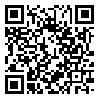Volume 11, Issue 4 (July & August - Special Issue on Memory, Reward & Stress 2020)
BCN 2020, 11(4): 525-534 |
Back to browse issues page
Download citation:
BibTeX | RIS | EndNote | Medlars | ProCite | Reference Manager | RefWorks
Send citation to:



BibTeX | RIS | EndNote | Medlars | ProCite | Reference Manager | RefWorks
Send citation to:
Abdi Gorabi S, Mohammadzadeh H, Rostampour M. The Effects of Ripe Pistachio Hulls Hydro-alcoholic Extract and Aerobic Training on Learning and Memory in Streptozotocin-induced Diabetic Male Rats. BCN 2020; 11 (4) :525-534
URL: http://bcn.iums.ac.ir/article-1-1370-en.html
URL: http://bcn.iums.ac.ir/article-1-1370-en.html
1- Department of Motor Behavior, Faculty of Physical Education and Sport Sciences, University of Urmia, Urmia, Iran.
2- Cellular and Molecular Research Center, School of Medicine, Guilan University of Medical Sciences, Rasht, Iran.
2- Cellular and Molecular Research Center, School of Medicine, Guilan University of Medical Sciences, Rasht, Iran.
Abstract:
Introduction: Diabetes mellitus has harmful effects on body functions, such as learning and memory. According to the role of exercise and medicinal plants on body health, the purpose of this study was to survey the effect of combined aerobic training and the use of Ripe Pistachio Hulls (RPH) hydro-alcoholic extract on learning and memory in streptozotocin-induced diabetic male rats.
Methods: In this experimental study, 42 male Wistar rats weighing 250-280 g were used in 6 groups with an equal number of 7 rats in each one. Streptozotocin (STZ) (50 mg / kg)was used to induce diabetes , and the test protocol was applied for 8 weeks. Passive avoidance memory was assessed using a step-through passive avoidance apparatus (shuttle box). SPSS software was used to analyze the data and P<0.05 was significant.
Results: The results showed that step-through latency in the acquisition trial (STLa) was not significantly different among groups. Step-through latency in retrieval (STLr 24) test significantly reduced and time spent in The Dark Compartment (TDC) decreased in treated groups compared with the diabetic control groups (P<0.001). Also, there was no significant difference between the STZ and saline diabetic groups.
Conclusion: The findings of this study revealed that the RPH hydro-alcoholic extract and aerobic exercise could improve passive avoidance memory in streptozotocin diabetic rats. Meanwhile, they might be an adjuvant therapy combined with other traditional medicine.
Methods: In this experimental study, 42 male Wistar rats weighing 250-280 g were used in 6 groups with an equal number of 7 rats in each one. Streptozotocin (STZ) (50 mg / kg)was used to induce diabetes , and the test protocol was applied for 8 weeks. Passive avoidance memory was assessed using a step-through passive avoidance apparatus (shuttle box). SPSS software was used to analyze the data and P<0.05 was significant.
Results: The results showed that step-through latency in the acquisition trial (STLa) was not significantly different among groups. Step-through latency in retrieval (STLr 24) test significantly reduced and time spent in The Dark Compartment (TDC) decreased in treated groups compared with the diabetic control groups (P<0.001). Also, there was no significant difference between the STZ and saline diabetic groups.
Conclusion: The findings of this study revealed that the RPH hydro-alcoholic extract and aerobic exercise could improve passive avoidance memory in streptozotocin diabetic rats. Meanwhile, they might be an adjuvant therapy combined with other traditional medicine.
Type of Study: Original |
Subject:
Behavioral Neuroscience
Received: 2018/11/26 | Accepted: 2019/01/19 | Published: 2020/07/1
Received: 2018/11/26 | Accepted: 2019/01/19 | Published: 2020/07/1
Send email to the article author
| Rights and permissions | |
 |
This work is licensed under a Creative Commons Attribution-NonCommercial 4.0 International License. |








